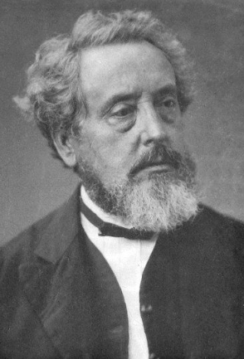Title: Chief Engraver, United States Mint
Birthdate: May 2, 1807
Death Date: August 31, 1879
Plot Location: Section 140, Lot 3

It could be humorously said that William Barber was “cut out” to be a die engraver. Engraving is a special kind of artistry that involves both a design and the cutting or inscribing of that design into the surface of something. That’s how medals and coins are made, with careful attention to the smallest detail.
He was born in London to John Barber whom, he said, “bore one of the most honored names as a medalist and die engraver in England.” William learned from both his father and one of the first schools to teach the craft in London. In 1830 he married Anna Maria Coultart when they were in their early twenties. Their first child arrived a year later with another seven to follow.
All eight children and their parents departed Liverpool in 1852. William listed his occupation on the ship’s manifest as “artist.” They arrived in Philadelphia but the place where they eventually settled was Melrose, Massachusetts. The 1860 census shows two of their youngest children must have died in childhood and the oldest had married and moved away.
William’s artistic skills were put to work first as a die sinker, a person who engraves the die which is used to stamp the metal, and later as a designer. He passed on this skill to his son Charles who carried on the family tradition the rest of his life.
The director of the U.S. Mint learned of William’s talent and offered him a position. They moved to Philadelphia where he began working for the Chief Engraver, James B. Longacre, just after the Civil War. When his boss died in 1868, William was officially appointed Chief Engraver by President Andrew Johnson.

 His first project was designing and making the dies for a medal to commemorate the completion of the transcontinental railroad on May 10, 1869. It featured a profile of President Ulysses S. Grant, and was first struck in November of that year in gold, silver, and copper. Only one medal was struck in gold, however, and William was given the honor of presenting it to the President.
His first project was designing and making the dies for a medal to commemorate the completion of the transcontinental railroad on May 10, 1869. It featured a profile of President Ulysses S. Grant, and was first struck in November of that year in gold, silver, and copper. Only one medal was struck in gold, however, and William was given the honor of presenting it to the President. He and the Chief Coiner were sent to the White House for the occasion on December 7.
He and the Chief Coiner were sent to the White House for the occasion on December 7.
Not long after this, William hired his son Charles as an Assistant Engraver, but William’s work at the Mint came to an end in 1879 as he grew noticeably weaker. His official cause of death was “debility,” meaning physical weakness or  exhaustion. Charles was then appointed the sixth Chief Engraver of the United States Mint. He went on to create the Liberty Head or “Barber” dime, quarter, and half dollar, which was in circulation for more than 20 years.
exhaustion. Charles was then appointed the sixth Chief Engraver of the United States Mint. He went on to create the Liberty Head or “Barber” dime, quarter, and half dollar, which was in circulation for more than 20 years.
Anna Barber died 14 months after William, but he provided for her and their two single daughters in his will, leaving a personal estate of $21,000. All four graves were marked with this horizontal or “ledger” gravestone in the Yeadon side of the cemetery.

Support the Friends of Mount Moriah
Help us in our mission to restore and maintain the beautiful Mount Moriah Cemetery by donating to our cause or volunteering at one of our clean-up events.

